
Viking Names
Gunness
Gunness, in the Manley Wapentake of Lincolnshire, is an Old Norse compound from the male personal name Gunni and nes ‘a ness, a headland, a promontory’. The name is topographically appropriate as it is located on a marked promontory on the River Trent. The same personal name also occurs in Gunby and Gunthorpe, Lincolnshire.
Read More

Viking Names
Risby
Risby, in the West Riding of Lindsey in Lincolnshire from Old Norse hrís ‘shrubs, brushwood’ and Old Norse by ‘A farmstead, a village’. This name is found as Rejsby and Risby in Denmark and it is possible that the place-name is transferred from there. If this is the case it was presumably because it is topographically appropriate for the English name as for the Danish. Risby is a joint parish with Roxby.
Read More
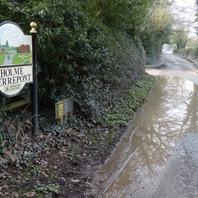
Viking Names
Holme Pierrepont
Holme Pierrepont, in the Bingham Wapentake of Nottinghamshire, comes from Old Norse holmr ‘an island, an inland promontory, raised ground in marsh, a river-meadow’. The name describes its location which is surrounded by watercourses and dikes. The suffix Pierrepont was added at a later date to reflect the family connected to the location. For more information about holmr place-names in the East Midlands, see the Lunchtime Talk Holme from Home? East Midland Place-Names and the Story of Viking Settlement.
Read More
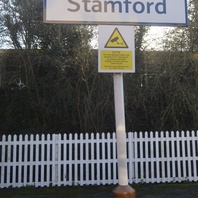
Viking Names
Stamford
Stamford, in the Ness Wapentake of Lincolnshire, is one of the Five Boroughs of the Danelaw. The place-name comes from the Old English elements stan ‘stone’ and ford ‘ford’. The town is located near a point where the River Welland was easily fordable throughout the year. In 913 The Great Heathen Army arrived in Stamford.
Read More
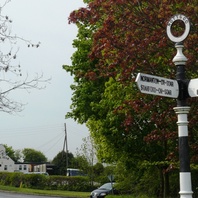
Viking Names
East Leake
East Leake in Rushcliffe Wapentake of Nottinghamshire, is a simplex name from Old Norse lœkr ‘brook’. East and West Leake are on the banks of a small stream which joins the Soar at Kingston.
Read More
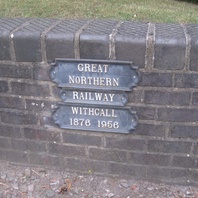
Viking Names
Withcall
Withcall, in the Louth Eske Wapentake of Lincolnshire, is a Scandinavian compound from Old Norse viðr ‘a wood; or a tree, a tree-trunk’ and Old Norse kjǫlr ‘a keel, a ridge (of hills)’, which is topographically appropriate.
Read More
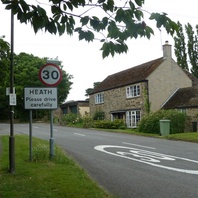
Viking Names
Heath
The eatlier name for Heath, in the Scarsdale Hundred of Derbyshire, was Lund from Old Norse lundr ‘grove, small grove’. Heath from Old English hǣð ‘heather; a tract of uncultivated land’ replaced the older name which remains only as a field name.
Read More
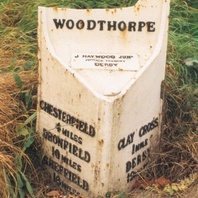
Viking Names
Woodthorpe
Woodthorpe, in the Scarsdale Hundred of Derbyshire, is an Anglo-Scandinavian hybrid name from Old English wudu ‘a wood; or wood, timber’ and Old Norse þorp ‘a secondary settlement, a dependent outlying farmstead or hamlet’.
Read More
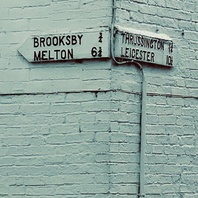
Viking Names
Brooksby
Brooksby, in the East Goscote Hundred of Leicestershire, is a difficult name. The first element is likely the Old Norse male personal name Brok which was originally a byname derived from Old Norse brók ‘breeches’. Alternatively it has been suggested that the first element is Old English broc ‘a brook, a stream (used of a stream with a muddy bed and a visible sediment load)’. This brook may refer to the River Wreake or more likely a small stream which rises near Brooksby. The first element could also be the Old Danish cognate brok ‘bog, marsh’ which is found in place-names in Denmark. However, these elements do not otherwise show a genitival structure whereas the personal name does. The second element of the name is Old Norse by ‘a farmstead, a village’.
Read More
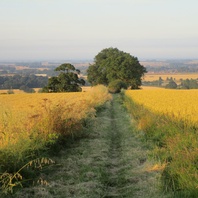
Viking Names
Hawerby
Now joined with Beesby, Hawerby is in the Haverstoe Wapentake of Lincolnshire, which has also been joined with Bradley Wapentake to form Bradley Haverstoe Wapentake. The name comes from an Old Norse male personal name Hávarðr plus the Old Norse element by ‘farmstead, village’. Interestingly, the same personal name is found in the wapentake name, Haverstoe, which combines it with the Old Norse element haugr ‘mound’. As Kenneth Cameron put it, ‘the coincidence is too great to avoid the conclusion that both are named from the same man. The site of the wapentake meeting-place is almost certainly a mound in the parish of Hawerby’. It has been suggested that the mound in question is a prehistoric round barrow (of which there is little or no trace today, as a result of ploughing) at TF 254 977, which has a fine view of the Humberside levels.
Read More
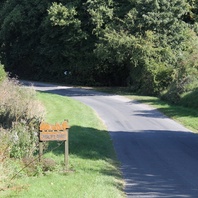
Viking Names
Ruckland
Ruckland, in the Louth Eske Wapentake of Lincolnshire, is a Scandinavian compound formed from Old Norse hrókr ‘a rook’ and Old Norse lundr ‘a small wood’.
